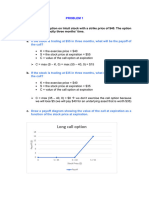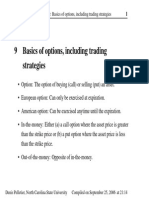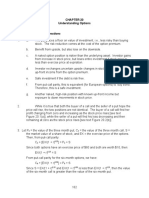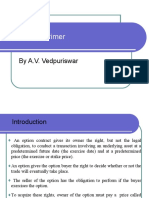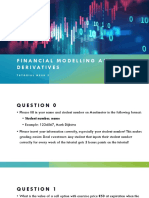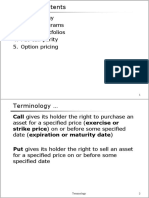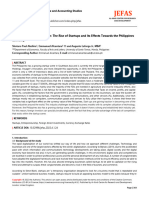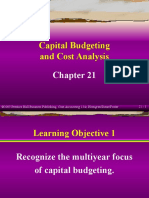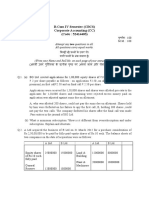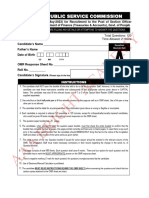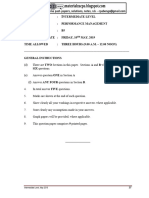Assignment 5
-
Chapter 9
Problem 9.9.
Suppose that a European call option to buy a share for $100.00
costs $5.00 and is held until maturity. Under what circumstances
will the holder of the option make a profit? Under what
circumstances will the option be exercised? Draw a diagram
illustrating how the profit from a long position in the option
depends on the stock price at maturity of the option.
~
Problem 9.10.
Suppose that a European put option to sell a share for $60 costs
$8 and is held until maturity. Under what circumstances will the
seller of the option (the party with the short position) make a
profit? Under what circumstances will the option be exercised?
Draw a diagram illustrating how the profit from a short position
in the option depends on the stock price at maturity of the
option.
Problem 9.11.
Describe the terminal value of the following portfolio: a newly
entered-into long forward contract on an asset and a long
position in a European put option on the asset with the same
maturity as the forward contract and a strike price that is equal
to the forward price of the asset at the time the portfolio is set
up. Show that the Portfolio has the same value as a European
call option with the same strike price and maturity.
Problem 9.20.
Options on General Motors stock are on a March, June,
September, and December cycle. What options trade on (a)
March 1, (b) June 30, and (c) August 5?
Chapter 10
�Problem 10.14.
The price of a European call that expires in six months and has
a strike price of $30 is $2. The underlying stock price is $29,
and a dividend of $0.50 is expected in two months and again in
five months. Risk-free interest rates for all maturities are 10%.
What is the price of a European put option that expires in six
months and has a strike price of $30?
Problem 10.24.
The prices of European call and put options on a non-dividend-
paying stock with 12 months to maturity, a strike price of $120,
and an expiration date in 12 months are $20 and $5,
respectively. The current stock price is $130. What is the implied
risk-free rate?
Problem 10.25.
A European call option and put option on a stock both have a
strike price of $20 and an expiration date in three months. Both
sell for $3. The risk-free interest rate is 10% per annum, the
current stock price is $19, and a $1 dividend is expected in one
month. Identify the arbitrage opportunity open to a trader.
�� This is the same as the terminal value of a
European call option
forward contract and exercise equal
with the same
maturity as the
price
to Fo Forward price
Profit But Total
I
15 -
10 -
5
20
-
O
d I (S) : asset price
30
* Forward contract the call with the strike time to
+
put = same
price and
the
maturity as
put.
* Forward contract = 0 at the time the portfolio is set up ,
=> Therefore;
the put is the same as the call at the time is set
up
.
9 20. :
a .
April June and September
March
, ,
b .
July , August September December , ,
c .
August September, December March
, ,
10 14 : .
PUT-CALL PARITY
-ri
So -
PVo + (Div)
,
= c (k T) ,
-
P(k T) + ,
Ke
T
=> I(k +) C(k , +) PVo (Div)
-
,
= + ke -
So +
+
0( xi 0.E 5 "x
302 + 0 51
-
= 2 +
-
29 + 0 52 . .
= 2 .
Prepaid forward stock = Stock price -
PVo (Div)
,
+
= 29- (0 52 x
.
+ 0 .
50x2) = 28 0287
.
.
�10 . 24 -U Pt-call parity :
Keri + C = P+ So
-
r **
120e + 20 = 5+ 130
-> r = 0 .
0426=4 .
26 %
Put callparityrT=P+
10 25
:
.
%x
3 + 202-10 x=
% 10
E) + (1) e = 1 + 19
.
=> P = 4 5
.
=> Undervalued .
*
Arbitrage Strategy :
(t)
Sell Portfolio A : C +Ke-rt + D e
,
Buy Portfolio B :
P +St
=>
Both Portfolios have the same
payoff (put call
parity) but :
-
P +
St < C + Keri + De-rE












